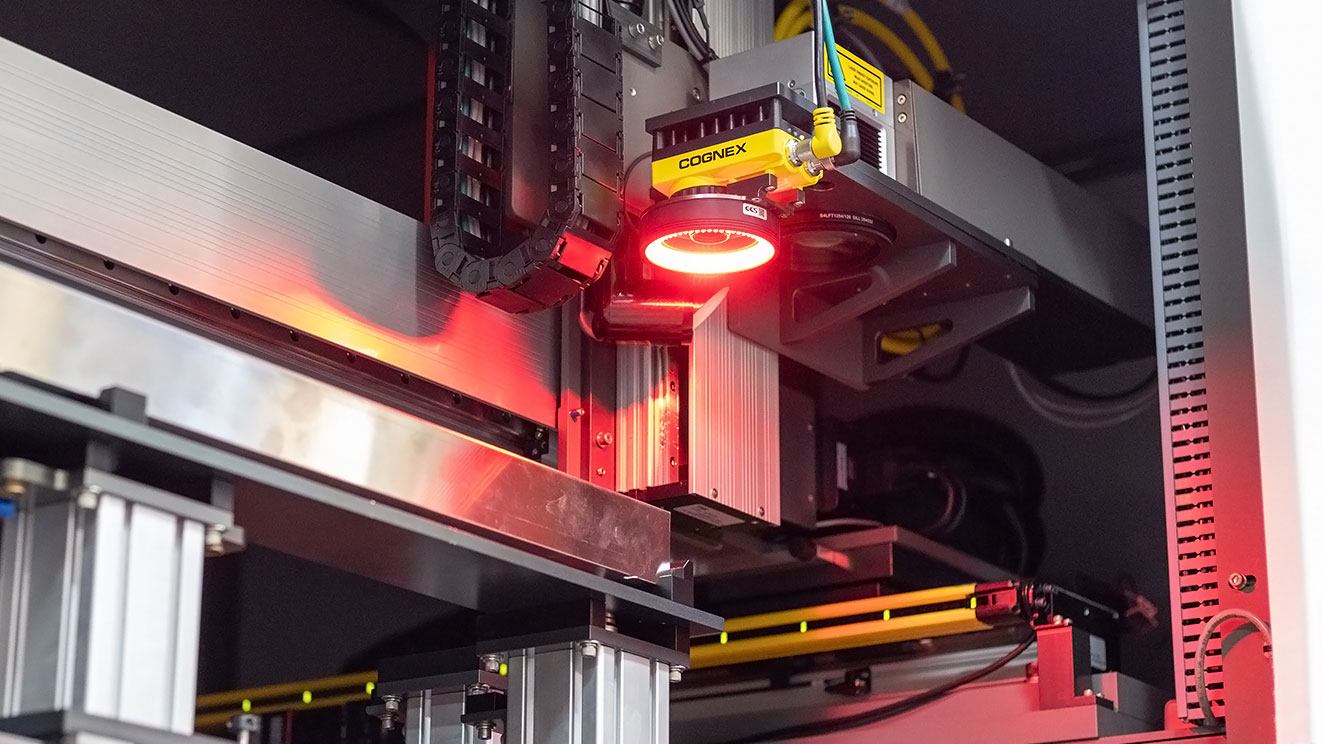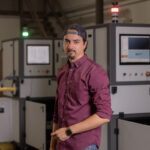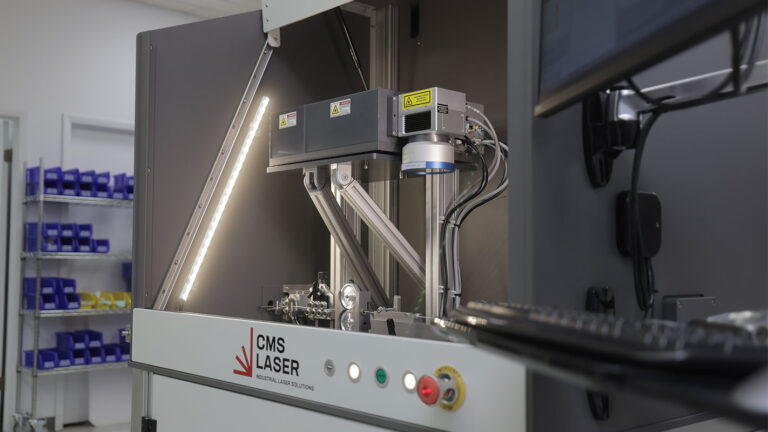Machine vision systems have been an integral part of manufacturing for decades; however, during that time the technology has improved immensely. They are useful (and in some cases, critical) across laser functions, including laser marking, drilling, etching and engraving.
These days more than half of the laser systems built by CMS Laser incorporate some element of machine vision with varying levels of complexity. At a basic level – and the type that’s been around for years – vision is used for pass/fail type verification, or to provide guidance and precise location information for the laser process.
Today’s technology, coupled with CMS Laser’s expertise, has allowed us to integrate vision in more refined ways in order to increase accuracy, repeatability, and quality.
There are three primary roles for vision systems in today’s laser machines: identification, guidance, and validation. Let’s take a deeper look:
Pre-Process: Identification & Guidance
Vision systems are frequently integrated with laser machine tools to identify and guide the laser’s function. This allows critical and valuable data to be communicated so the laser is able to perform its function within the client’s desired requirements. The pre-process can be broken down into two key aspects: identification and guidance.
Identification
Laser Marking, drilling, cutting, etching and engraving are some of the most common functions that use vision systems to assure the highest product quality.
During the identification process, vision or reader systems retrieve the data associated with the product by scanning the attached travel documentation. By quickly reading the barcode, the vision system can determine important details, such as:
- Identity of the part(s)
- Quantity of parts to process
- Work order for what needs to be done to the product
- Beginning/ending serial numbers
- Other data related to the laser process
The vision system communicates this information to the laser’s control system so it can perform its function, all without manual intervention.
Guidance
A vision system can also assist in locating the part within a set or to ensure correct positioning for the laser. This part of the pre-process – guidance – verifies the product is accurately positioned or aligns process to part location allowing for the laser to make a precise cut, drill, mark, or other process. The data provided by the vision system can also be used to guide a robot to pick up the part and place it within the laser field.
In addition, the vision system can locate fiducial marks, v-grooves for de-paneling printed circuit boards, or other identifiable features necessary to complete a high-precision laser process.
Post-Process: Validation
After the laser performs its designated function – guided by the vision system – many clients want
to verify and validate the results to ensure quality and accuracy. The vision system can provide
validation in the following ways:
- Pass/Fail Verification: This is a relatively simple process that is done by accurately verifying the presence of the mark, hole, weld, etc.
- Dimension: Confirms the dimensions of the mark, hole, weld, etc. are accurate and the positioning is within tolerance.
- Legibility: Verifies the legibility and content of laser marked text and machine readable codes.
- Compliance: Vision is crucial for verifying the compliance of laser marked 2D matrix codes with ECC200/ISO/IEC TR29158/AIM DPM standards.
Vision System in a High-Speed Manufacturing Line
The ability to validate the laser’s actions in real-time is essential for many high-speed manufacturing lines. We have integrated vision systems in several high-throughput pharmaceutical tablet drilling lines. Let’s take a quick look at the process:
Within an on-the-fly laser processing system, a vision system monitors the tablets as they move through the manufacturing line and are accurately drilled.
Pre-processing vision ensures the tablet is in the right orientation to be drilled. If not, the automated system uses the vision system’s feedback to send the tablet back to the previous step.
After the drilling takes place, the verification feature of the vision system detects any and all faults while on the conveyor line. If a tablet does not meet specifications, it’s removed from the manufacturing line.
The combination of automation, vision and laser accuracy has enabled us to create laser systems that accurately drill up to 140,000 tablets an hour.
Final Thoughts
Employing a pre- and post-processing vision system can further enhance the accuracy of the process, avoid costly manufacturing errors and increase product quality.
CMS Laser’s technology is an excellent choice when automation, speed, and precision are required. As with any laser application, there are many considerations and unique challenges. CMS Laser’s Applications Development Lab works with each client to determine what laser and optics configuration performs best for the application.
In the upcoming weeks, we’ll discuss the different variables to consider when integrating a vision system and take an in-depth look at two laser systems we developed where vision plays a crucial role.
Are you wondering how to incorporate a vision system with your laser applications? Contact us today to discuss your needs and specifications.








0 comments
Leave a comment.